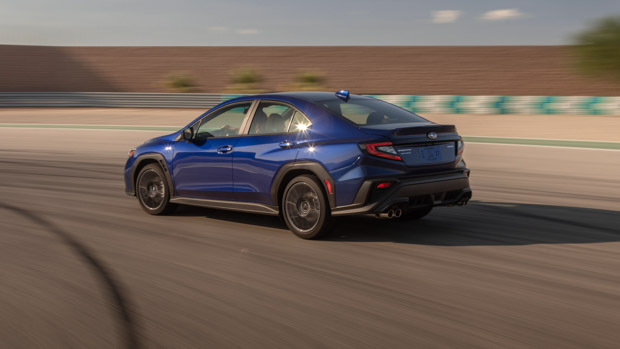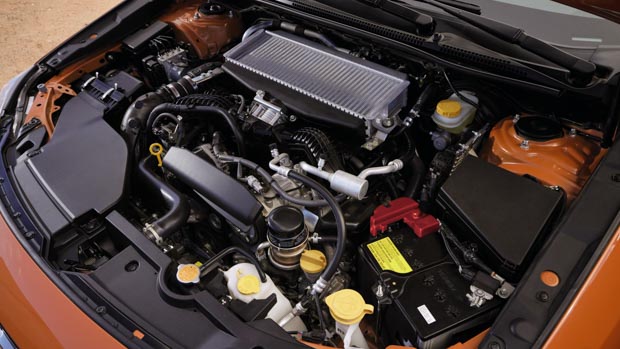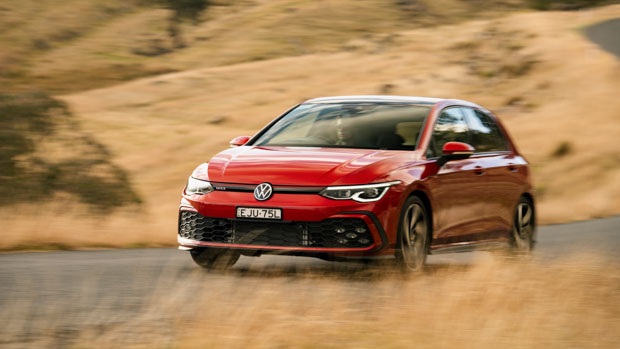-
Car Reviews
- All reviews
- Midsize SUVs
- Small cars
- Utes
- Small SUVs
- Large SUVs
- Large cars
- Sports SUVs
- Sports cars
- Vans
Latest reviews
- Car News
-
Car Comparisons
Latest comparisons
- Chasing Deals
While the Subaru WRX isn’t all about fuel efficiency, the US-market new-generation model seems surprisingly thirsty
The fifth-generation Subaru WRX has worse fuel consumption than the previous model, according to the United States Environmental Protection Agency (EPA).
Subaru launched the WRX onto the American market late last year where it caught the attention of fans with its impressive new FA24 2.4-litre turbo-petrol flat-four engine, replacing the distantly related FA20 2.0-litre engine of the same type.
While 202kW of power and 350Nm of torque is nothing to dismiss, the figures show only a 5kW increase and the same torque as its 2.0-litre predecessor – though engineers emphasised that the new engine was about usable grunt, not peak figures.
The report released overnight by the EPA states the WRX uses 11.2L/100km in combined testing conditions when equipped with a CVT automatic – a figure that improves to 10.7L/100km when equipped with a six-speed manual transmission.
Compared to the US-spec MY21 fourth-generation model, the aforementioned figures show an increase of 0.5L/100km for both the automatic (previously 10.7L/100km) and the manual (previously 10.2L/100km).
For context, the US-market Volkswagen Golf GTI offers a similar level of performance and uses 8.4L/100km, according to the same testing standard.
The fifth-generation Subaru WRX is yet to receive a combined fuel-economy rating according to Australia’s comparatively more lenient ADR81/02 testing standard, but we can take some insights from the EPA rating.
As stated previously, the US-market fourth- and fifth-generation WRXs are both more fuel efficient with the manual transmission than the CVT, however the reverse is true for the fourth-generation Australian model due to differences in testing.
Our fourth-gen WRX is rated at 8.6L/100km for the CVT automatic and 9.2L/100km for the manual.
When taking into account the percentage change of the US WRX generations, Australian-delivered WRXs are likely to receive combined ADR fuel figures of around 9.0L/100km for the CVT version and 9.7L/100km for the manual.
That projected rating is inferior to a Hyundai i30 N hatch in manual and dual-clutch versions (both 8.5L/100km), the DSG-only Volkswagen Golf GTI (7.0L/100km) and even the outgoing, manual-only Honda Civic Type R (8.8L/100km).
A Land Rover Defender 110 large SUV, with circa 2.3-tonne kerb weight and a 294kW/550Nm 3.0-litre turbo straight-six has a fuel economy rating 9.9L/100km.
Whether the fifth-generation WRX can deliver more impressive fuel efficiency on the road remains to be seen but at the moment it looks like its potential Aussie owners may need to take its increasingly thirsty nature into consideration if they vote Green
Latest news
About Chasing cars
Chasing Cars reviews are 100% independent.
Because we are powered by Budget Direct Insurance, we don’t receive advertising or sales revenue from car manufacturers.
We’re truly independent – giving you Australia’s best car reviews.


